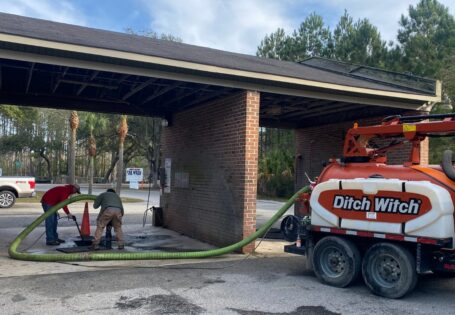
Having low water pressure at home can make even the simplest of tasks annoying and tedious. When only one or two fixtures at home suffer from low pressure, you can easily remedy the problem by focusing on getting just that fixture fixed. However, a variety of different plumbing issues can affect the water pressure to the whole house. For instance, every time you run the dishwasher the toilets don’t flush well and you can’t take a shower if anything else is running.
A long hot shower is no fun when the water pressure is too low. Waiting for the toilet to refill so you can run the water for a bath. Choosing between starting the wash and flushing a toilet or taking a shower. Low water pressure is always a huge pain.
We get a lot of service requests for fixing low water pressure in homes. If you experience low water pressure in different areas of the house, the first thing you need to do is to narrow down the root cause of the problem. Check your water pressure symptoms against this list to see if you have a problem that you can fix easily or if it’s time to call in the professional local plumber.
Here are some great plumbing tips to help diagnose your low water pressure problem.
1. Check your water meter.
Make sure that the water meter is turned on all the way. Sometimes, when people make sewer repairs they turn the water back on slowly and just a little bit at a time. Unfortunately, it’s often the case that they forget to turn it back on all the way. If you’re experiencing low water pressure after having repairs done, check your meter first and the other water shut off areas.
2. Check your main shut off valve.
After checking your water meter, make sure the main shut off valve is also opened all the way. If you are using gate valves, they should be turned all way counter clockwise. If you’re using ball valves, they should be parallel to the direction of the pipe to be fully opened.
3. Check your pressure regulator.
When there is a problem or failure with the pressure regulator, it can cause either a large increase in pressure or a huge decrease in water pressure. This problem will definitely affect the whole house and you’d see the change in all your fixtures. If you’re up to doing the job yourself, you can change the faulty pressure regulator yourself by finding a replacement with the same size and brand. But in most cases, it’s simply better and more efficient to just call a professional technician in Hertfordshire.
4. You might consider getting a sewer re-pipe.
If you’ve been living in your home for a long time, the old pipes can be the cause of the low water pressure. This is especially true if your home is using old galvanized pipes. Slowly, over the years, the insides of the pipes get a buildup that closes off the water ways reducing water flow to fixtures until they become eventually unusable. If build up in old pipes is the problem, they will need to be replaced with new pipes. This is a major sewer repair that would need a professional plumbing technician.
Older homes were typically piped with galvanized metal pipes that are only 1/2 inch in diameter. Over time those pipes can corrode or rust. With hard water there can also be significant mineral buildup over time. When we open a pipe these older pipes, we often find them half full of rust, minerals and muck. Yes, your family is drinking that! And bathing in it. And cooking with it. And brushing teeth….
The solution to corroded pipes is a whole-house re-pipe. It can seem like a big job, but most homes can be re-piped in 2-4 days. We keep the job area clean so your family experiences minimal inconvenience. We also make sure that some of the water in your home is working when we leave the house at the end of the work day. That way you can keep using your home while the work is done.
Scroll down to see how to find a local plumber in your area.







